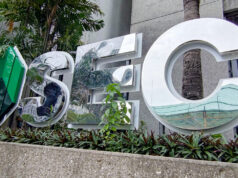New museum focuses on the history of Binondo
MANY OF the first pharmacies, theaters, and department stores in the City of Manila were found in the district of Binondo. Founded in 1594, the city had a pivotal role in international trade and the place of the world’s first Chinatown in this role is the focus of a new museum.
Megaworld Corp. has opened the country’s first cultural museum dedicated to Binondo, the Chinatown Museum, located in its Lucky Chinatown mall.
The museum has 18 galleries — four of which are dedicated to changing exhibitions — focusing on events that shaped the cultural, social, and economic life of Binondo, from its establishment as a settlement of Christianized Chinese, to the development of the area as a bustling commercial downtown of colonial Manila.
“Part of our company’s tourism initiatives is to integrate museum projects in its township development across the country,” said Tefel Pasigan-Valentino, vice-president and head for marketing and business development of Megaworld Lifestyle Malls, during the museum’s launch on June 7.
Chinatown Museum is the second museum venture of Megaworld Corp. following the Iloilo Museum of Contemporary Art which opened last year. Future district museums are to follow in Mactan, Cebu, and Pampanga.
“As we build communities in different parts of the country, we want the future generations to understand and appreciate the culture and heritage of those places, thus we’re putting [museums in them] so that it will be a venue for people to interact,” Ms. Pasigan-Valentino added.
District museums are unique since they are site specific. “I think we need district museums because people have to know how the district began. What were the different achievements of the district? Who were the people who lived in the area before? That gives a better sense of urban pride,” Fernando Zialcita, professor of anthropology at Ateneo de Manila University (ADMU) and chief consultant for the Chinatown Museum, said.
The museum is recognized by the National Historical Commission and National Commission of Culture in the Arts as “a community space and heritage project that lends a visual retelling of the rich history of Binondo.”
FOCUS ON EDU-TAINMENT
From the 1600s to the 1800s, the city of Manila was known as the country’s commercial hub and the world’s crossroad. Binondo — located across city’s center, Intramuros, on the other side of the Pasig River — was home to many Chinese laborers and artisans which earned it the nickname “Chinatown.” According to the museum brochure, Binondo got its name from the word “binundok” due to its low hills.
“People think that Binondo is all commerce. May kwento rin ’yan. May kasaysayan (It has a story. It has history),” Mr. Zialcita said.
It took four years of research, going through magazines and journals in ADMU and records from the digital library of the Biblioteca Nacional de España, to set up the museum said Mr. Zialcita.
“We chose key highlights in Binondo’s history. So it’s more of ‘edu-tainment’ because we understand the museum’s growth now is not only about knowledge and education, but it’s really more about what is Instagram-able. So if you’ve seen the galleries, we made sure that you could easily sit down, take a photo, and interact with the gallery itself,” Chinatown Museum curator Janine Cabato said.
For a more immersive experience, the Chinatown Museum app is available for download on Google Play for Android users and the Apple Store for iOS users. The customized app aims to provide easy access to the museum’s gallery information on Binondo’s rich and colorful history. It utilizes Bluetooth technology, and it allows for a smoother transition between topics and information while inside the museum.
Among the museum’s highlights are a gallery about the Alcaiceria de San Fernando (the silk market), constructed in 1572; a display on the Tranvia de Filipinas where guests can sit on a stationary train and watch a video about it’s history; a gallery on the Botica de San Fernando where guests may whiff through a drawer of 25 medicinal herbs and flowers; paintings of heritage buildings in the Escolta gallery were guests can also draw the structures using a tablet with a mopit (a Chinese calligraphy brush) dipped in disappearing ink; and a discreet display of an opium den.
“Mayroon tayong pwedeng ipagmalaki (We have something to be proud of). That’s why we need very engaging and attractive museums so they would know that you have something to speak of and that there have been certain achievements that we must not forget,” Mr. Zialcita told BusinessWorld shortly after the launch.
“Manila is the first global city. We keep forgetting that. We don’t know it in fact.
“[The city’s] cosmopolitanism is actually reflective of the Filipino way of life until now. That’s why Filipinos are so open to different influences. We were open to diversity. May pinangalingan. Kaya pala tayo ganito (It came from somewhere. That explains why we are who we are),” he said.
The Chinatown Museum is at the 4th floor of Bldg. A of the Lucky Chinatown Mall, Reina Regente St., Binondo, Manila. It is open from Tuesday to Sunday, 10 a.m. to 6 p.m. Admission for regular visitors is P150, P120 for senior citizens, and P100 for students. Admission is free for children under four feet tall. Ticket selling ends 30 minutes before closing time. For more information, visit www.chinatownmuseum.org or email chinatownmuseumph@gmail.com. — Michelle Anne P. Soliman



